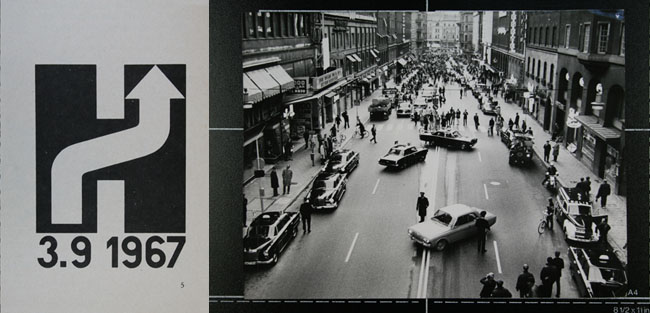New Year 2008 - Schedule of Celebrations
| 01. FIRST entered New Year 2008 Kiribati- Christmas Isl, Kiritimati | UTC+14 |
| For example when Kiritimati (UTC+14) enters the New Year at midnight Dec 31, 2007 (New Year 2008), the local time in New York is 05am (morning) Dec 31, 2007, local time in London is 10am and local time in Sydney is 09pm (21:00) Dec 31, 2007. | |
| 02. SECOND entered New Year 2008 Chatham Islands- New Zealand | UTC+13:45 |
| 03. THIRD entered New Year 2008 New Zealand- Wellington, Tonga, Antarctica-South Pole, McMurdo, Skott stations; Kiribati- Phoenix Islands | UTC+13 |
| 04. Russia- Chukotka, Kamchatka ; Fiji, Nauru, Tuvalu, Marshall Isl., Wallis and Futuna, Kiribati- Tarawa | UTC+12 |
| 05. Norfolk Island (Kingston)- Australia | UTC+11:30 |
| 06. Australia- Sydney, Melbourne, Canberra, Hobart; Solomon Isl., New Caledonia, Micronesia- Ponape, Vanuatu, Russia-Magadan | UTC+11 |
| 07. Australia- Adelaide | UTC+10:30 |
| 08. Russia- Vladivostok, Khabarovsk, Sakhalin Isl.; Australia- Brisbane; Guam, Papua New Guinea, Northern Mariana Isl. | UTC+10 |
| 09. Australia- Darwin | UTC+09:30 |
| 10. Japan- Tokyo, Australia- Perth, South Korea, North Korea, Russia- Chita, Yakutsk; Palau, Indonesia- Jayapura, Ambon; East Timor, more ... | UTC+09 |
| 11. China- Beijing, Taiwan, Hong Kong, Singapore, Philippines, Malaysia, Indonesia-Bali, Mongolia, Brunei Darussalam, Russia-Irkutsk, Bratsk, Ulan-Ude; more ... | UTC+08 |
| 12. Thailand- Bangkok, Vietnam, Laos, Cambodia, Indonesia- Java, Sumatra; Australia- Christmas Isl., Russia-Krasnoyarsk, Kemerovo; more ... | UTC+07 |
| 13. Myanmar (Burma)- Yangon | UTC+06:30 |
| 14. Bangladesh- Dhaka, Bhutan; British Indian Ocean Territory- Chagos- Diego Garcia, Russia- Novosibirsk, Omsk; Kazakhstan- Almaty, Astana, Kyrgystan | UTC+06 |
| 15. Nepal- Kathmandu | UTC+05:45 |
| 16. India- New Delhi, Mumbai, Bangalore, Kolkata; Sri Lanka | UTC+05:30 |
| 17. Pakistan- Islamabad, Uzbekistan, Turkmenistan, Tajikistan, Kazakhstan-Aqtau, Aqtobe, Maldives, Kerguelen Isl.(Fr.), Russia- Yekaterinburg, Chelyabinsk, Perm, Ufa | UTC+05 |
| 18. Afghanistan- Kabul | UTC+04:30 |
| 19. United Arab Emirates- Dubai, Armenia, Azerbaijan, Georgia, Seychelles, Mauritius, Reunion- France, Oman, Russia- Samara, Izhevsk | UTC+04 |
| 20. Iran- Tehran | UTC+03:30 |
| 21. Russia- Moscow, St.Petersburg; Iraq, Saudi Arabia, Bahrain, Kuwait, Yemen, Qatar, Madagascar, Kenya, Tanzania, Somalia, Sudan, Ethiopia, Comoros, Uganda, more ... | UTC+03 |
| 22. Belarus- Minsk, Russia- Kaliningrad; Greece, Ukraine, Moldova, Latvia, Lithuania, Estonia, Bulgaria, Romania, Israel, Gaza Strip, Syria, Lebanon, Jordan, Cyprus, Turkey, South Africa, Zimbabwe, Zambia, Malawi, Rwanda, Libya, Namibia, Mozambique more ... | UTC+02 |
| 23. France-Paris, Germany, Serbia, Spain, Italy, Netherlands, Malta, Monaco, Sweden, Switzerland, Gibraltar, Czech Republic, Denmark, Algeria, Angola, Austria, Belgium, Cameroon, Chad, Congo, Croatia, Hungary, Liechtenstein, Luxembourg, Nigeria, Norway, Poland, Slovakia, Slovenia, Tunisia, Vatican City, more ... | UTC+01 |
| 24. United Kingdom-London, Portugal, Ireland, Iceland, Canary Isl., Morocco, Cote d'Ivoire, Sierra Leone, Saint Helena, Western Sahara, Sao Tome and Principe, Senegal, Guinea, Guinea-Bissau, Gambia, Ghana, Liberia, Mali, Mauritania, more ... | UTC |
| 25. Cape Verde- Praia, Azores (Port.), Greenland- Ittoqqortoormiit | UTC-01 |
| 26. Brazil- Sao Paulo, Rio de Janeiro, Brazilia; Uruguay, South Georgia and the South Sandwich Islands Argentina- Buenos Aires | UTC-02 |
| 27. Chile, Brazil- Salvador, Recife , Paraguay, Suriname, French Guiana, Greenland- Nuuk, U.K.- Falkland Isl. | UTC-03 |
| 28. Canada- Newfoundland (St. John's) | UTC-03:30 |
| 29. Canada - Nova Scotia (Halifax), New Brunswick, Prince Edward Island; Barbados, Bermuda (U.K.), Netherlands Antilles, Saint Lucia, Grenada, Dominica, Dominican Republic, Saint Kitts and Nevis, Antigua and Barbuda, Trinidad and Tobago, Puerto Rico, Bolivia, more ... | UTC-04 |
| 30. Venezuela - Caracas | new UTC-04:30 |
| 31. USA- New York, Washington D.C., Miami, Boston, Atlanta, Detroit, Indianapolis, Baltimore, Philadelphia, Virginia Beach; Canada- Toronto, Montreal, Ottawa, Quebec; Cuba-Havana, Peru, Colombia, Bahamas, Jamaica, Ecuador, Panama, more ... | UTC-05 |
| 32. USA- Chicago, New Orleans, Minneapolis/St. Paul, Oklahoma City, Houston, Dallas, Milwaukee; Canada- Winnipeg, Regina; Mexico- Mexico City, Acapulco, Veracruz; Guatemala, Honduras, El Salvador, Nicaragua, Belize, Costa Rica, more ... | UTC-06 |
| 33. USA- Denver, Albuquerque, El Paso, Salt Lake City, Santa Fe, Phoenix, Tucson; Canada- Calgary, Edmonton, Aklavik, Yellowknife; Mexico- Chihuahua, Mazatlan, more ... | UTC-07 |
| 34. USA- Los Angeles, San Francisco, San Diego, Seattle, San Jose, Las Vegas, Portland-OR; Canada- Vancouver, Whitehorse; Mexico- Tijuana, Mexicali; U.K. - Pitcairn | UTC-08 |
| 35. USA- Anchorage, Fairbanks, Nome, Unalaska, Juneau; French Polynesia- Gambier Islands | UTC-09 |
| 36. French Polynesia- Marquesas Islands (Nuku Hiva, Hiva Oa) | UTC-09:30 |
| 37. USA- Hawaii (Honolulu), Adak-Aleutian Isl.; Cook Islands (Avarua), French Polynesia-Tahiti (Papeete) | UTC-10 |
| 38. LAST to enter New Year 2008 American Samoa- Pago Pago, Samoa (Apia), Niue (Alofi), Midway Islands, Jarvis Isl., Kingman Reef, Palmyra Atoll | |
http://www.worldtimezone.net/newyear24.html
If you want to celebrate New Year's TWICE, just fly from New Zealand, after midnight into the past, into yesterday and party once more in the Cook Islands!

Keywords: u2r2h newyear celebrations fest party dateline international date line time zones congratulate people in all countries world time gmt utc greenwich mean time east west equator longitude latitude geographical information world map - nuovo ano neujahr silvester nouvelle an nuevo anno silvestre when does Chicago celebrate new year?

 Earth's magnetic field:
Earth's magnetic field:
